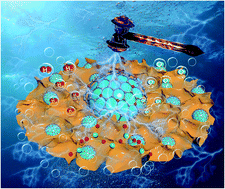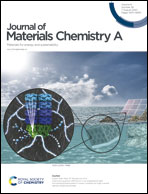Ultra-thin N-doped-graphene encapsulated Ni nanoparticles coupled with MoO2 nanosheets for highly efficient water splitting at large current density†
Abstract
An efficient non-noble metal-based bifunctional catalyst with ultrahigh performance at large current density is imperative for industrial electrochemical water splitting. Herein, ultra-thin N-doped-graphene encapsulated Ni nanoparticles coupled with MoO2 nanosheets self-supported on 3D nickel foam are synthesized by a hydrothermal method and post-treatment at high temperature. The experimental results and theoretical calculations confirm the electron transfer from Ni to N-doped-graphene at the interface, which can boost the hydrogen evolution reaction (HER) and oxygen evolution reaction (OER) performance. It displays Pt-like HER activity, can reach −10 mA cm−2 with a lower overpotential of 25 mV, and hold at −400 and −1000 mA cm−2 for 172 h without decline in performance. Meanwhile, it also exhibits good OER performance at large current density and can work for 196 h at 1000 mA cm−2 without attenuation as the cathode and anode, suggesting superior durability. This work indicates that the interface engineering of the N-doped-graphene encapsulated structure is beneficial to overall water splitting and offers a promising method for future hydrogen production.



 Please wait while we load your content...
Please wait while we load your content...